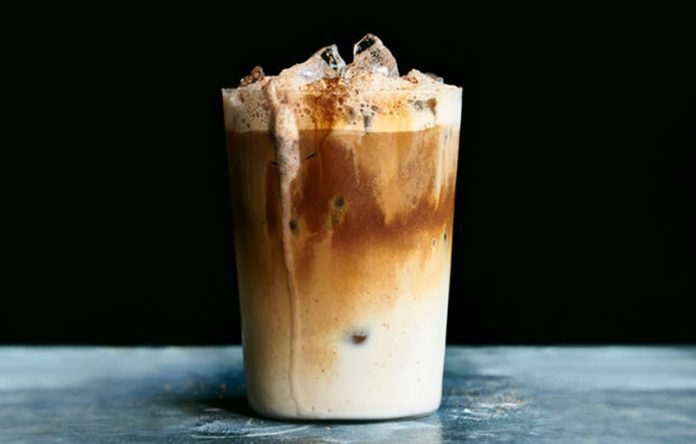I can’t remember the first time I tried horchata, but I’m sure it was love at first taste. I do remember being told by the owner of the nearby Taquería Raymundo that it was made from rice, which at the time seemed odd, but hey, at that point many things in Mexico were new to me.
Making horchata is a fairly complex process that involves soaking rice overnight, traditionally with a cinnamon stick, then blending the rice and liquid, straining it and adding sweetener and any other flavorings you might want.
Served frosty-cold with lots of ice, horchata is a popular plant-based drink in Mexico that has increasingly started to appear on upscale menus in the U.S. as an exotic artisan beverage, spawning its own line of signature cocktails. (Mexican Russian, anyone?)
While it pairs well with rum, tequila, mezcal or vodka, it’s also a perfect accompaniment to spicy foods as it provides a bit of relief to the palate. Horchata tends to have a somewhat chalky mouth-feel from the blended rice (that I somehow find appealing) and needs to be stirred often, although there will always be some solids at the bottom of your glass or pitcher.
The history of horchata is quite surprising. It’s said to have originated in West Africa, where kunnu aya is made with tiger nuts rather than rice. The Muslim conquest brought the drink to Valencia in the 13th century, and from there it traveled across the ocean to the so-called New World. The Spanish horchata de chufa is also made with tiger nuts or “earth almonds,” which are not actually nuts but small round tubers that grow underground, like potatoes.

In Mexico and Guatemala, horchata de arroz, or simply horchata, is made with soaked and blended rice, water, cinnamon and sometimes vanilla and almonds. Cebada is made in a similar fashion but with barley instead of rice.
Since that first time, I’ve had horchata in many forms, in many places. The easiest, of course, is to buy a pre-packaged mix at any grocery store, add water and sweetened condensed milk, chill and serve. (In taquerías, restaurants, etc. it can often be really, really sweet, so if you make it yourself you can modify the level of sweetness.)
I’ve also happily discovered cocohorchata, a mix of fresh coconut water and regular horchata. Oh my! Returning from a long and lovely beach day at Stone Island, south of Mazatlán, I was hot, sweaty and thirsty. On the spur of the moment I stopped at a combie on the side of the road whose big sign for “COCOHORCHATA BIEN FRÍA!” was irresistible. Refreshing and delicious, it hit the spot and was added to my list of favorite neighborhood venues.
Making horchata is more complicated than you’d think and is a little time-consuming, but the result is eons better than horchata made from a packaged mix. I tend not to write about traditional Mexican dishes that are so much easier to go out to eat than to make at home, but have made an exception in this case. If you want to avoid the overly sweetened and processed horchata-from-a-bag, this is the way to go. Play around with different milks and gentle spicing.
Some recipes call for rice flour, but I’ll warn you away from those; the finished product will not be what you want. If you’re gonna make it, then make it right!
Traditional Mexican Horchata
- 1 cup uncooked white long-grain rice
- 5 cups water
- ½ cup regular milk, almond milk or coconut milk/water
- ½ Tbsp. vanilla
- ½ Tbsp. cinnamon or two 5” whole cinnamon sticks
- 1/3 cup sugar
- Optional: 1 tsp. pumpkin spice mix / ½ cup slivered almonds
Pour the rice, water and almonds, if using, into a blender; blend until the rice just begins to break up, about 1 minute. If using cinnamon sticks, add them to rice/water mixture. Let mixture stand at room temperature for a minimum of three hours or as long as overnight. Strain the rice water into a pitcher and discard the rice and cinnamon sticks, if used. Stir in the milk, vanilla, cinnamon and sugar. Chill and stir before serving over ice.
Dirty Horchata (Coffee Horchata or Cochata)
- 2 cups uncooked long-grain white rice
- 1 (14-oz.) can sweetened condensed milk
- 1 Tbsp. ground nutmeg
- 1 Tbsp. ground cinnamon
- ½ gallon whole milk
- 2 cups cold brew concentrate or espresso, for serving
Add the rice and 2½ cups water to a large container and cover. Soak at room temperature for a minimum of eight hours. Pour rice and soaking liquid into a blender, and blend or pulse until all the rice is finely ground, 2 to 3 minutes. Add condensed milk, nutmeg and cinnamon; blend until combined. Pour mixture into a large pitcher or bowl. Add the whole milk and whisk until incorporated. To serve, divide horchata among ice-filled glasses and top with cold brew concentrate, to taste, about 2-3 Tbsp. cold brew for each cup of horchata. –Cooking.nytimes.com
Janet Blaser has been a writer, editor and storyteller her entire life and feels fortunate to be able to write about great food, amazing places, fascinating people and unique events. Her first book, Why We Left: An Anthology of American Women Expats, is available on Amazon. Contact Janet or read her blog at whyweleftamerica.com.
